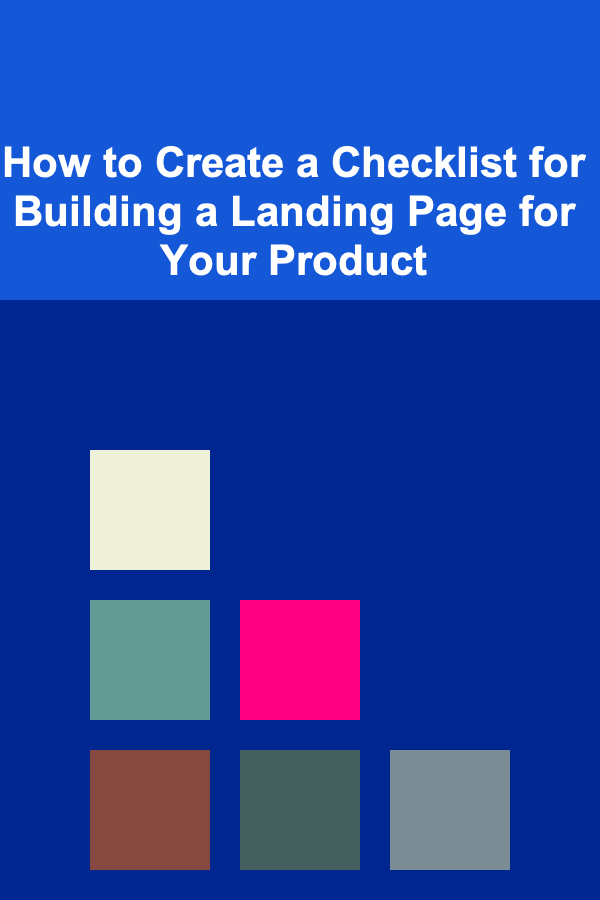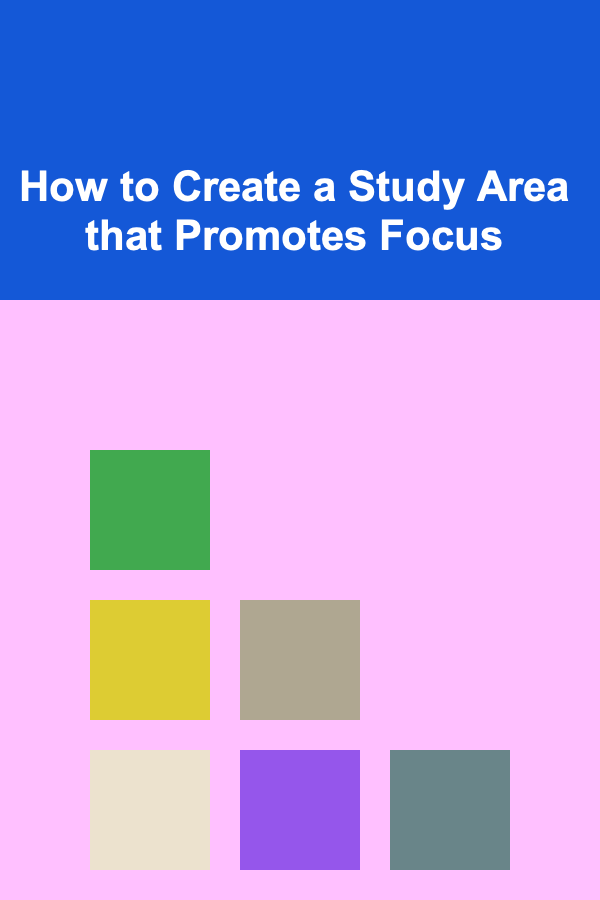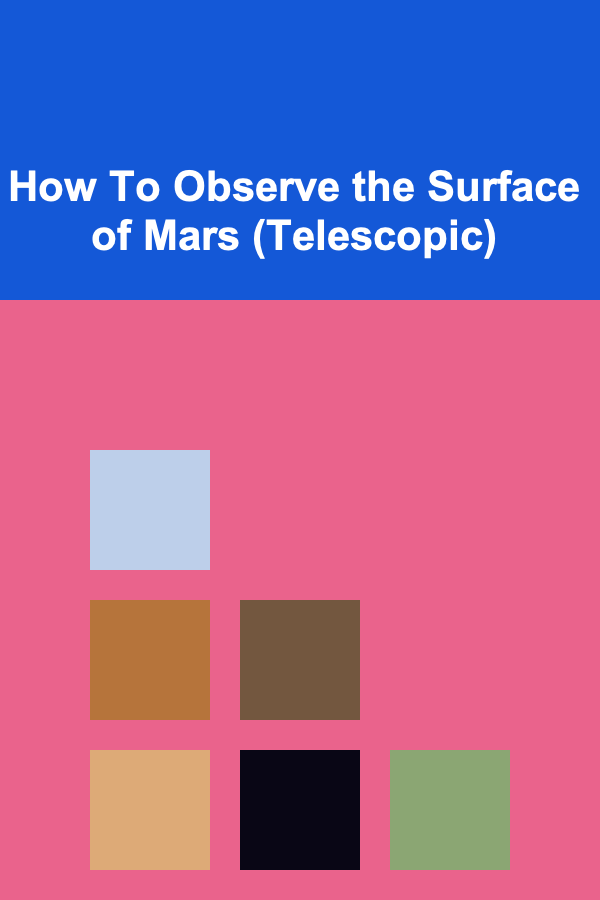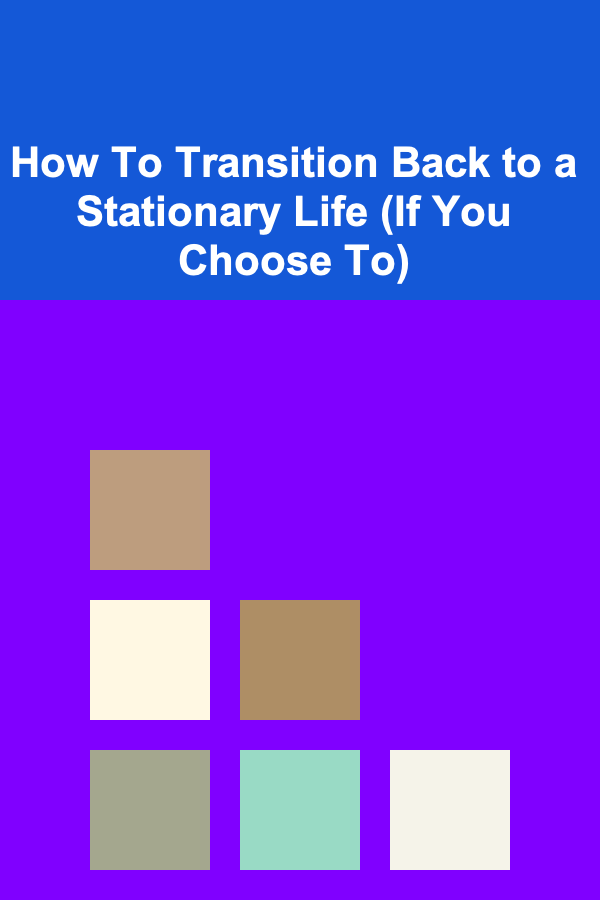
How to Create a Checklist for Building a Landing Page for Your Product
ebook include PDF & Audio bundle (Micro Guide)
$12.99$7.99
Limited Time Offer! Order within the next:

Creating a landing page for your product is one of the most critical elements in online marketing. It serves as the first point of contact between your product and potential customers, and can significantly influence their decision to purchase, sign up, or learn more. However, crafting an effective landing page is no simple task. It requires careful planning, attention to detail, and a deep understanding of both the product and the target audience.
In this actionable guide, we'll walk you through the essential steps of building a comprehensive checklist for creating an effective landing page. Whether you're a first-time entrepreneur or a seasoned marketer, following this checklist will help you create a landing page that converts visitors into loyal customers.
Define Your Objective Clearly
The first step in building a landing page is understanding its purpose. Before starting the design or content creation process, you need to ask yourself: What do you want visitors to do on this page?
Your objective will directly inform the design, layout, and content of the landing page. Common objectives for landing pages include:
- Product Purchase -- If your goal is to drive sales, your landing page should focus on showcasing the benefits and features of the product, and make it easy for visitors to purchase.
- Lead Generation -- If you want to collect leads for future marketing, your landing page should feature a form or call-to-action (CTA) to collect user information like email addresses or phone numbers.
- Event Registration -- For events or webinars, the objective might be to encourage sign-ups. Your landing page should provide clear details and a form to register.
- Product Demo or Trial Sign-Up -- In this case, the landing page should highlight the value of trying your product with a straightforward CTA that encourages users to sign up.
Actionable Tip: Start by defining a single, clear call-to-action (CTA) for the landing page. Avoid cluttering the page with multiple goals.
Understand Your Audience
The effectiveness of a landing page is directly tied to how well it resonates with your target audience. By understanding your audience, you can craft messaging and design elements that speak to their pain points, motivations, and desires.
- Identify the Problem: What challenge does your product solve for your target audience? This will help frame the messaging on your landing page.
- Know the Demographics: Are you targeting young professionals, small businesses, or retirees? This will influence your tone, language, and design.
- Use Personas: Create customer personas to guide content creation. These personas should include details like age, job role, challenges, goals, and how your product helps solve their problems.
Actionable Tip: Conduct user research and surveys to gather insights about your audience's preferences and behavior. This can inform your messaging and design decisions.
Craft a Compelling Headline and Subheadline
Your headline is the first thing visitors will see when they land on the page, and it needs to immediately grab their attention. A good headline should clearly communicate the primary benefit or value proposition of your product in a concise manner.
- Keep it Short and Sweet: Aim for a headline that's clear, direct, and easy to understand. Avoid jargon and complexity.
- Highlight the Benefit: Focus on what visitors will gain from your product, not just the product features.
- Use Action-Oriented Language: Use verbs and action words that inspire visitors to take the next step.
The subheadline supports the headline by providing additional context or clarifying the offer. While the headline grabs attention, the subheadline should provide more information to build interest.
Actionable Tip: A/B test different versions of your headline and subheadline to see which one resonates best with your audience.
Design for Simplicity and Clarity
The design of your landing page plays a crucial role in its effectiveness. The layout should be visually appealing while ensuring the user experience (UX) is smooth and intuitive. A cluttered or confusing design can distract visitors from your CTA and reduce conversions.
- Minimalist Design: Keep your design clean and focused. Use a lot of white space, and avoid overloading the page with text or images.
- Focus on One CTA: Your CTA should be the most prominent element on the page. It should stand out but not overwhelm the visitor.
- Consistent Branding: Use colors, fonts, and imagery that align with your brand. Consistency helps build trust with visitors.
- Mobile-Optimized: Make sure your landing page is responsive, meaning it looks and functions well on both desktop and mobile devices.
Actionable Tip: Test your landing page design across different devices to ensure it's mobile-friendly. More than half of web traffic comes from mobile devices, so optimizing for mobile is essential.
Create Engaging and Persuasive Content
Content is at the heart of any landing page. It should inform, persuade, and motivate visitors to take action. Here's what to focus on:
- Value Proposition: Clearly communicate the primary benefit of your product. Why should visitors care? What problem does your product solve?
- Product Features and Benefits: Focus on the most important features of your product and explain how they provide value. Use bullet points to break up text and make it scannable.
- Social Proof: Include testimonials, customer reviews, or case studies to build credibility and trust.
- Visuals: Use high-quality images or videos to showcase your product. A demo video can be especially effective in conveying the value of your product.
Actionable Tip: If possible, include user-generated content, such as customer reviews or social media mentions. This builds authenticity and trust.
Optimize for SEO
Your landing page won't be effective if people can't find it. To ensure your page shows up in search engine results, implement basic SEO best practices:
- Use Relevant Keywords: Research the keywords your audience is searching for and include them naturally in your copy, headings, and meta descriptions.
- Meta Tags: Ensure your page has a compelling meta title and meta description to improve search engine visibility and click-through rates.
- Alt Text for Images: All images should have descriptive alt text to improve SEO and ensure accessibility.
- Fast Loading Speed: Google rewards fast-loading pages with higher search rankings, so optimize your images and code to reduce page load time.
Actionable Tip: Use tools like Google Analytics and Google Search Console to track your landing page's performance and optimize based on real data.
Incorporate a Strong Call-to-Action (CTA)
The CTA is the most crucial element of your landing page. It's the action you want visitors to take. Your CTA should be:
- Clear and Direct: Use action verbs like "Sign Up", "Download", "Get Started", or "Buy Now".
- Visually Distinct: Make your CTA button stand out by using contrasting colors and making it large enough to be easily clickable.
- Placed Strategically: Position the CTA in multiple places on the page---at the top, in the middle, and at the bottom---so visitors can take action no matter where they are on the page.
- Urgency or Incentives: Adding urgency ("Limited Time Offer") or an incentive ("Get a Free Trial") can prompt users to act now rather than later.
Actionable Tip: Test different CTA variations to find the most effective language, design, and placement.
Track and Analyze Performance
Once your landing page is live, it's essential to track its performance to understand what's working and what's not. Use analytics tools to measure key metrics like:
- Conversion Rate: The percentage of visitors who take the desired action (e.g., purchase, sign-up).
- Bounce Rate: The percentage of visitors who leave the page without taking any action. A high bounce rate may indicate issues with your design or content.
- Time on Page: Measure how long visitors are staying on your page. Longer engagement typically indicates higher interest.
Actionable Tip: Use A/B testing to try different versions of your landing page and optimize for better conversion rates.
Conclusion
Creating an effective landing page for your product requires careful planning, strategy, and execution. By following this checklist---defining your objective, understanding your audience, crafting compelling content, optimizing your design, and tracking performance---you'll be well on your way to building a landing page that drives conversions and helps grow your business. Consistently test and improve based on real user data to achieve long-term success.
Reading More From Our Other Websites
- [Home Pet Care 101] How to Clean Your Pet's Ears Safely
- [Home Budget Decorating 101] How to Style Your Coffee Table on a Budget
- [Personal Finance Management 101] How to Start Investing for Millennials: A Beginner's Guide to Building Wealth from Scratch
- [Organization Tip 101] The Best Dryer Vent Cleaning Kits for a Safe and Efficient Home
- [Personal Financial Planning 101] How to Save for College: Maximize Your Savings with 529 Plans and Other Strategies
- [Home Holiday Decoration 101] How to Make the Most of Pinecones in Holiday Decor for a Winter Wonderland Feel
- [Home Pet Care 101] How to Keep Your Pet Safe During the Holidays
- [Home Staging 101] How to Stage Your Home Using Rental Furniture for a Professional Look
- [Whitewater Rafting Tip 101] Adventure Planning: How to Pick the Right Whitewater Rafting Class for Your Next Trip
- [Home Maintenance 101] How to Prevent Mold and Mildew with Regular Home Maintenance

How to Create a Study Area that Promotes Focus
Read More
How to Make a Content Promotion Checklist for Organic Growth
Read More
How To Observe the Surface of Mars (Telescopic)
Read More
Step-by-Step Guide to Successful DIY Home Improvement Projects
Read More
How To Transition Back to a Stationary Life (If You Choose To)
Read More
How To Improve Your Puzzle-Solving Skills in Games
Read MoreOther Products

How to Create a Study Area that Promotes Focus
Read More
How to Make a Content Promotion Checklist for Organic Growth
Read More
How To Observe the Surface of Mars (Telescopic)
Read More
Step-by-Step Guide to Successful DIY Home Improvement Projects
Read More
How To Transition Back to a Stationary Life (If You Choose To)
Read More